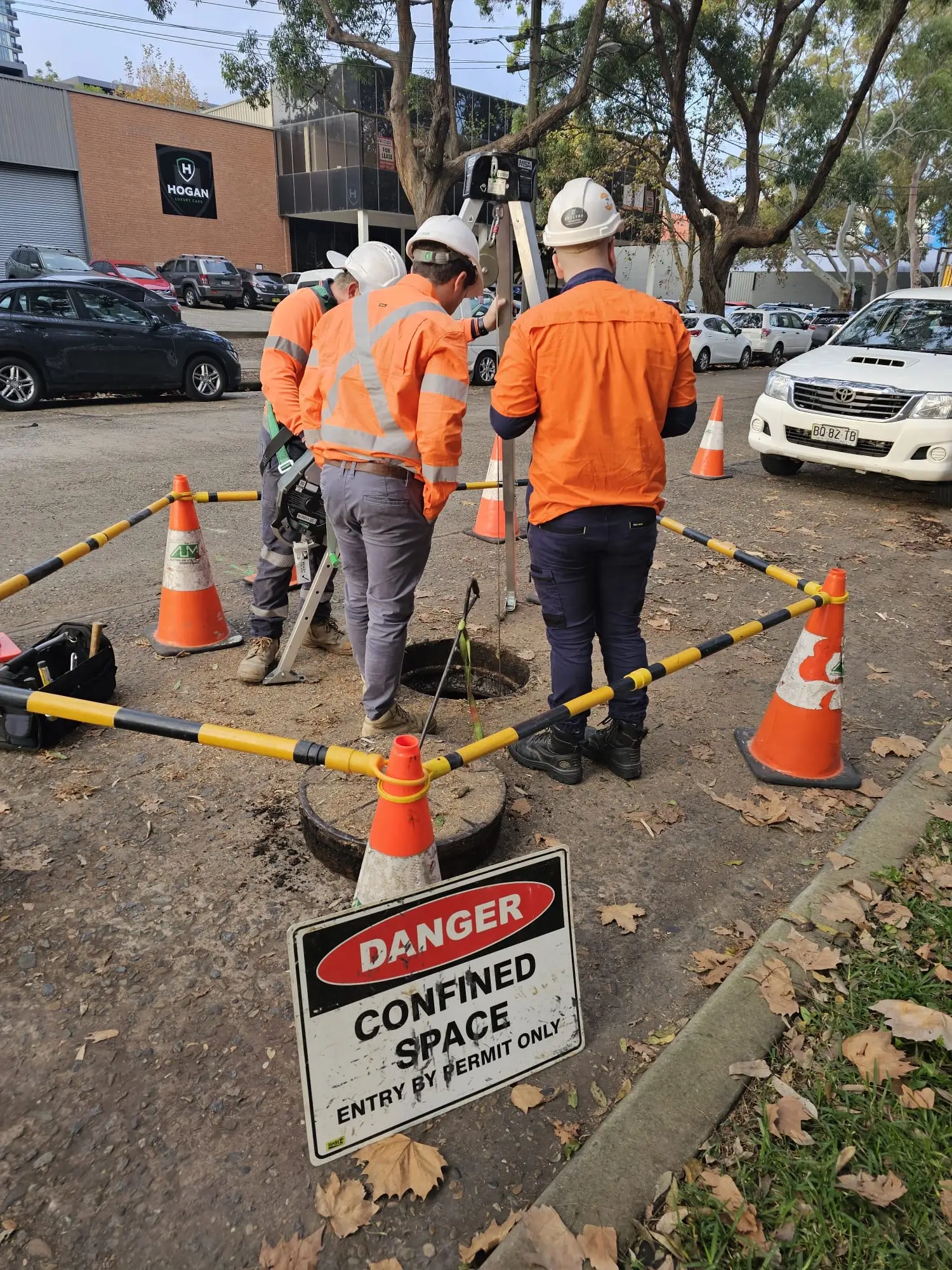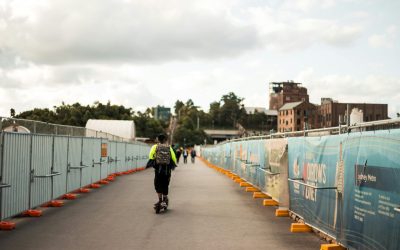In the realm of civil engineering and roadworks, the importance of accurate underground utility mapping and understanding utility infrastructure cannot be overstated. As urban areas continue to expand and infrastructure demands increase, the need to understand what lies beneath the surface has become paramount. This article delves into the significance of underground utility mapping, its methodologies, benefits, and the challenges faced in the field.
Understanding Subsurface Utility Engineering and Underground Utility Mapping
Underground utility mapping involves the identification and documentation of existing underground utilities, such as water pipes, gas lines, electricity cables, and telecommunications infrastructure. This process is crucial for any construction or excavation project, as it helps prevent damage to existing utilities and ensures the safety of workers and the public.
Understanding Underground Utilities
Understanding underground utilities is crucial for ensuring public safety and preventing damage to underground infrastructure. These utilities, which include electric, gas, water, and communication lines, are often buried beneath the surface, making them invisible to the naked eye. However, they can pose significant hazards if not properly located and marked before any digging or excavation projects commence.
Subsurface utility engineering (SUE) plays a vital role in this process. SUE professionals employ various techniques, such as ground-penetrating radar and electromagnetic induction, to detect and accurately locate underground utilities. In Australia, the significance of accurate underground utility mapping is underscored by the implementation of AS 5488—Classification of Subsurface Utility Information (SUI). Established in 2013, AS 5488 provides a standardised framework for classifying information about subsurface utilities, aiming to enhance public safety and reduce property damage during excavation activities. The standard introduces four quality levels (A to D) to indicate the reliability of utility location data, thereby promoting consistency and clarity in utility mapping practices.This non-invasive approach is essential for identifying the approximate location of utility lines without causing any disruption to the existing infrastructure.
Accurate mapping of underground utilities is indispensable for project planning, design, and construction. It enables utility operators, contractors, and project owners to identify potential conflicts and develop strategies to mitigate risks. By understanding the layout and condition of underground utilities, stakeholders can ensure that projects are completed safely, efficiently, and cost-effectively. This proactive approach not only safeguards public safety but also enhances the overall success of civil engineering projects.
What Does the Process Involve?
The mapping process typically begins with a thorough review of existing records and plans. Engineers and surveyors consult utility companies to obtain information about the location and depth of underground services at the site. Following this, advanced technologies such as ground-penetrating radar (GPR), electromagnetic induction, and sonar scanning are employed to accurately locate and map utilities.
These technologies allow for non-invasive exploration, which is essential in urban environments where numerous utilities may be crammed into limited spaces. The data collected is then compiled into detailed maps, which serve as invaluable resources for engineers and contractors during the planning and execution of roadworks. Additionally, the integration of Geographic Information Systems (GIS) allows for the layering of various data sets, providing a comprehensive view of the subsurface environment. This not only enhances the accuracy of the mapping but also enables better decision-making by visualising potential conflicts and planning for future developments.
The Importance of Accurate Mapping
Accurate mapping of underground utilities is vital for several reasons. Firstly, it helps mitigate risks associated with accidental strikes on utilities during excavation. Such incidents can lead to service interruptions, costly repairs, and even injuries within the project area. Secondly, it aids in the efficient planning of new projects, ensuring that new installations do not interfere with existing services.
Moreover, having precise information about underground utilities can facilitate better communication among various stakeholders, including engineers, contractors, and utility providers. This collaboration is essential for the successful completion of projects and for maintaining public safety. Furthermore, accurate mapping can significantly reduce the time and costs associated with construction delays caused by unforeseen utility conflicts. In a world where urban development is rapidly increasing, the ability to efficiently manage and navigate the complexities of underground infrastructure is becoming ever more critical. As cities expand and evolve, the demand for reliable utility mapping will only grow, making it an indispensable aspect of modern engineering and construction practices.
Benefits of Underground Utility Mapping
The advantages of underground utility mapping extend beyond mere safety. They encompass economic, environmental, and operational benefits that contribute to the overall success of civil engineering projects. Utility locating is a crucial service that ensures the accurate identification of underground utilities, thereby enhancing the overall success of civil engineering projects.
Cost Savings
One of the most significant benefits of accurate utility mapping is the potential for cost savings. By identifying the exact locations of utilities, contractors can avoid costly damages and delays. Repairing damaged utilities can be expensive and time-consuming, leading to budget overruns and extended project timelines. Additionally, adhering to the required time for utility responses before excavation can prevent costly damages and delays.
Furthermore, having a clear understanding of the underground landscape allows for more efficient project planning. This can lead to reduced excavation times and fewer unexpected complications, ultimately saving money on labour and materials.
Enhanced Public Safety
Safety is a primary concern in any construction project. Underground utility mapping plays a crucial role in ensuring the safety of workers and the public. By accurately identifying the location of utilities, workers can take necessary precautions to avoid accidents, such as gas leaks or electrical shocks.
Moreover, the use of advanced mapping technologies reduces the need for invasive digging, which can pose additional risks. By minimising excavation, the likelihood of accidents is significantly decreased, creating a safer working environment.
Environmental Considerations
Environmental sustainability is increasingly becoming a priority in civil engineering. Accurate utility mapping can contribute to more environmentally friendly practices by reducing the need for extensive excavation. This, in turn, helps to preserve the surrounding ecosystem and minimise disruption to local wildlife. Before starting any digging project, it is crucial to contact 811 to ensure that all underground utilities are properly marked and identified.
Additionally, by preventing accidental damage to existing utilities, underground utility mapping helps to avoid potential environmental hazards, such as leaks from gas or oil pipelines. This proactive approach not only protects the environment but also enhances the reputation of construction companies committed to sustainable practices.
Utility Mapping for Asset Management
Utility mapping is a critical component of asset management, providing utility operators and managers with a comprehensive understanding of their underground infrastructure. Accurate mapping of underground utilities is essential for maintaining public safety, preventing damage to infrastructure, and ensuring efficient operations.
The process involves creating detailed maps and models of underground utilities, including pipes, cables, and other infrastructure. These maps serve multiple purposes:
- Identifying Potential Conflicts and Risks: Utility mapping helps to pinpoint potential conflicts and risks associated with underground utilities, such as pipe bursts or cable damage. By identifying these issues early, utility operators can take preventive measures to avoid costly repairs and service interruptions.
- Optimising Maintenance and Repair: With accurate information about the location and condition of underground utilities, maintenance and repair activities can be optimised. This ensures that resources are allocated efficiently, reducing downtime and extending the lifespan of the infrastructure.
- Improving Asset Management: Utility mapping provides a comprehensive understanding of the underground infrastructure, enabling better asset management. This includes tracking the condition of utilities, planning for upgrades, and ensuring compliance with regulatory requirements.
- Enhancing Public Safety: By providing precise information about the location of underground utilities, utility mapping significantly reduces the risk of accidents and damage during excavation projects. This proactive approach is crucial for ensuring public safety and minimising disruptions to the community.
By leveraging utility mapping, utility operators and managers can make informed decisions about asset management, maintenance, and repair. This not only ensures the safety and efficiency of their underground infrastructure but also contributes to the overall success and sustainability of civil engineering projects.
Challenges in Underground Utility Mapping
Despite its numerous benefits, underground utility mapping is not without its challenges. Engineers and surveyors often face several obstacles that can complicate the mapping process. Ensuring the safety and accuracy of completed work is essential to avoid damage to existing utilities and meet regulatory requirements.
Inaccurate Records
One of the primary challenges in underground utility mapping is the reliance on existing records of utility infrastructure, which can often be outdated or inaccurate. Utility companies may not always maintain comprehensive or updated maps of their infrastructure, leading to discrepancies in the data.
This lack of reliable information can result in difficulties during the mapping process, as engineers may struggle to locate utilities accurately. Consequently, this can lead to potential risks during excavation and construction, undermining the very purpose of the mapping exercise.
Technological Limitations
While advanced technologies like GPR and electromagnetic induction have revolutionised underground utility mapping, they are not without limitations. For instance, certain materials may interfere with the signals used by these technologies, making it challenging to detect utilities accurately.
Moreover, the depth and condition of utilities can also affect the effectiveness of mapping techniques. Older utilities may be corroded or damaged, complicating the mapping process and potentially leading to misinterpretations of the data. Despite these challenges, advanced utility locating techniques continue to improve the accuracy and reliability of underground utility mapping.
Access Issues
Access to certain areas can pose another challenge in underground utility mapping. In densely populated urban environments, space constraints may limit the ability to conduct thorough surveys. Additionally, private properties or restricted areas may hinder access to certain utilities, making it difficult to obtain a complete picture of the underground landscape. Marking buried utility lines at the dig site is crucial to avoid damaging these lines during the excavation process.
These access issues can lead to incomplete mapping, which may result in unforeseen complications during construction projects. Engineers must be prepared to adapt their strategies to overcome these challenges and ensure comprehensive utility mapping.
The Future of Underground Utility Mapping
As technology continues to advance, the future of underground utility mapping looks promising. Innovations in data collection, analysis, and visualisation are set to enhance the accuracy and efficiency of mapping processes. Using white paint to outline specific locations before utility work can help ensure that only the designated area is marked by utility locators.
Integration of 3D Modelling
One of the most exciting developments in underground utility mapping is the integration of 3D modelling. This technology allows for the creation of detailed, three-dimensional representations of underground utilities, providing engineers with a clearer understanding of their spatial relationships.
3D modelling can facilitate better planning and decision-making within the project area, enabling engineers to visualise potential conflicts between existing utilities and new installations. This proactive approach can lead to more efficient project execution and reduced risks.
Improved Data Sharing
The future of underground utility mapping also lies in enhanced data sharing among stakeholders. As more companies adopt digital platforms for managing utility data, collaboration between engineers, contractors, and utility providers will become more seamless.
Improved data sharing can lead to more informed decision-making, as all parties will have access to accurate information about utility infrastructure. This collaborative approach can enhance project outcomes and contribute to safer, more efficient construction practices.
Increased Use of Artificial Intelligence
Artificial intelligence (AI) is poised to play a significant role in the future of underground utility mapping. AI algorithms can analyse vast amounts of data quickly and accurately, identifying patterns and trends that may not be immediately apparent to human operators.
This capability can enhance the accuracy of utility mapping and streamline the decision-making process. As AI continues to evolve, its integration into underground utility mapping will likely lead to even greater advancements in the field. AI algorithms can enhance the accuracy of utility locating techniques, making it easier to identify underground utilities.
Conclusion
In conclusion, subsurface utility locating is an essential component of roadworks and civil engineering. Its significance extends beyond safety, encompassing economic, environmental, and operational benefits. While challenges remain, advancements in technology and data sharing are set to revolutionise the field, paving the way for more efficient and effective mapping practices.
As urban areas continue to grow and infrastructure demands increase, the role of underground utility mapping will become even more critical. By investing in accurate mapping techniques and embracing new technologies, the civil engineering industry can ensure safer, more sustainable construction practices for the future. Ensuring the safety and accuracy of completed work is essential to avoid damage to existing utilities and meet regulatory requirements.




